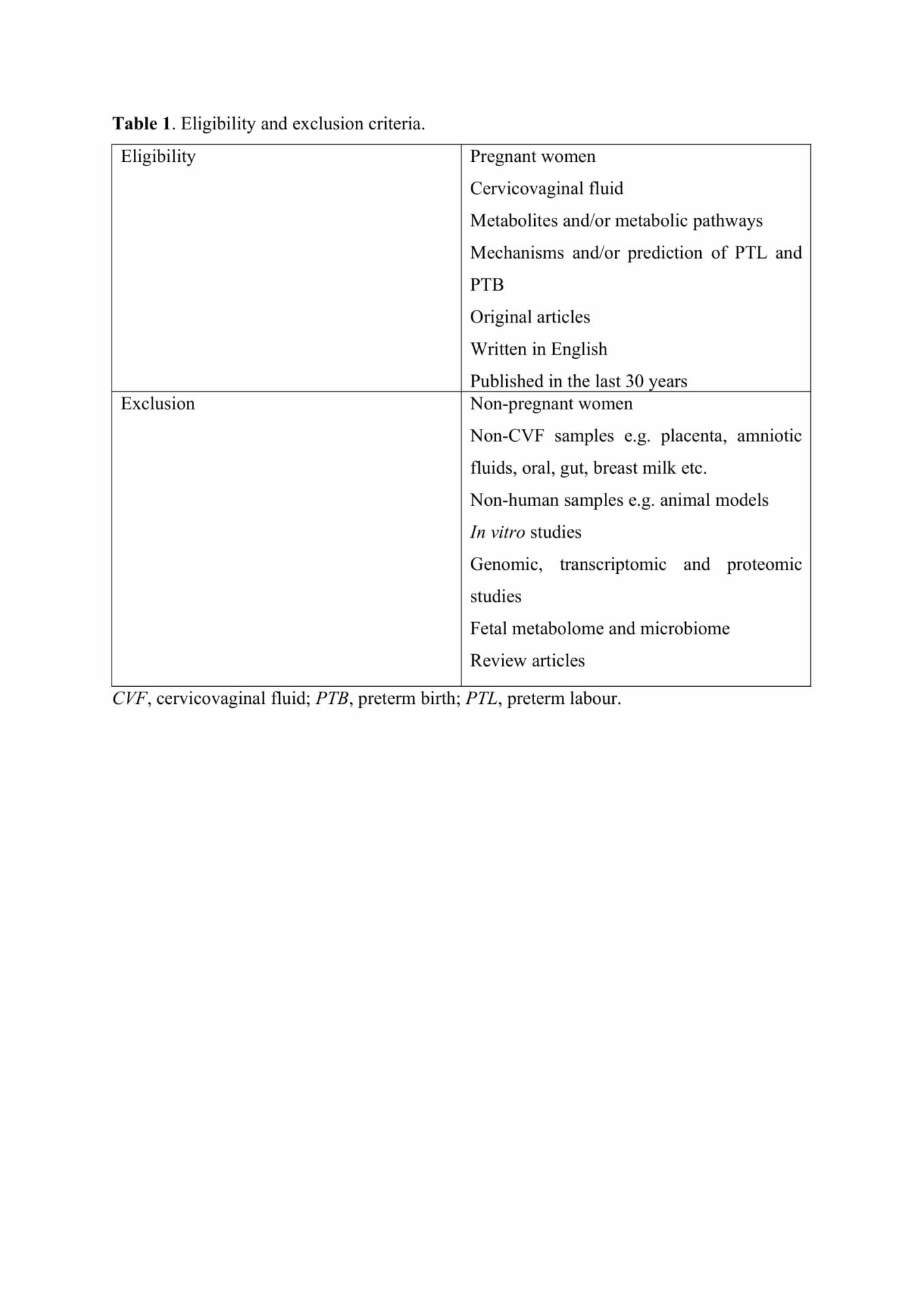Introduction: Delivery before 37 completed weeks of gestation (preterm birth, PTB) is still a major global health challenge, with 15 million babies born premature annually [1]. Majority (~75%) of PTBs occur spontaneously with still unresolved pathogenesis due to the multiple aetiologies. Intrauterine infection commonly ascending from an altered (dysbiotic) vaginal microbiota accounts for ~50% of spontaneous PTB (sPTB) [2]. Choriodecidual bacterial colonisation induces feto-maternal immunological responses that lead to production of proinflammatory mediators, uterotonins and matrix degrading enzymes that activate the common pathway to spontaneous labour [3, 4]. The cervicovaginal (CV) space is metabolically active and the metabolome is critical in understanding eubiosis, dysbiosis, infection and infection-associated sPTB [5]. Studies identifying CV microbial-metabolic pathways and developing predictive models based on metabolites obtained from pregnant women are limited. Aim/objective: We conducted a systematic review of the literature to identify studies that employed cervicovaginal fluid (CVF) microbial-metabolites and metabolic pathways to investigate the pathophysiology of and/or predict sPTB. Method: The review was conducted according to the PRISMA statement. Medline/PubMed and Web of Sciences databases were searched for relevant articles using specific search terms. Original studies that included CVF metabolites and metabolic-pathways to determine mechanisms and/or risk of PTB were eligible. The eligibility and exclusion criteria are listed in Table 1. The search results were reviewed by two authors (EA and MC) independently, first by title, followed by abstract and finally by full text. Cases of discordant views on a particular article were deliberated until a consensus was reached, otherwise a third author’s (NK’s) review of such article was adopted as the decider. Results: Of 115 studies identified, only 8 met the inclusion criteria. Seven of these studies reported a distinct CV metabolic profile in women destined to deliver preterm, while one study did not identify any significant difference between the groups. Only 2/8 of the studies reported microbial changes associated with the distinct metabolite profiles observed. The metabolites fit into common human-microbial metabolic pathways including the glycolytic, tricarboxylic acid, hydroxyglutarate and methylaspartate pathways; aspartate-arginosuccinate shunt and urea cycle; and ammonia assimilation cycle. Women with PTB showed increased/upregulated acetate, acetate:glutamate, mannitol/sorbitol, methyl phosphate (p<0.05) especially when they present with symptoms of preterm labour. Asymptomatic women that eventually deliver preterm also showed elevated xanthine, NADH, glucose, glucose-6-phosphate, N-acetylneuraminate, palmitoleate, 10-heptadecanoate, 1-palmitoyl glycerol, nicotinamide and 2-pyrrolidinone (p<0.05) at mid to late second trimester. At other instances, both symptomatic and asymptomatic women with PTB showed elevated ethanol, ethylene glycol, glycolate, methanol, isopropanol and formate (p<0.05). They also had elevated acetone and trimethylamine N-oxide (p<0.001), whereas lactate, branched chain amino acids, phenylalanine, tyrosine, alanine, aspartate and glycine are reduced compared to women without PTB (p<0.05). Conclusions: The CVF metabolite profile differs between term and preterm women, and could also reveal new pathways associated with sPTB. This could be a potential source of predictive biomarkers of sPTB. The metabolites and pathways could be exploited in developing predictive algorithms that incorporate other omic data for stratification of women at risk of sPTB and guide bespoke preventive and therapeutic interventions.
Physiology 2021 (2021) Proc Physiol Soc 48, PC015
Poster Communications: Microbial-metabolite pathways associated with cervicovaginal infection and spontaneous preterm birth: a systematic review
Neha Kulkarni1, Emmanuel Amabebe1, Megan Cavanagh1, Dilly Anumba1
1 Department of Oncology and Metabolism, University of Sheffield, Sheffield, United Kingdom
View other abstracts by:
Where applicable, experiments conform with Society ethical requirements.

